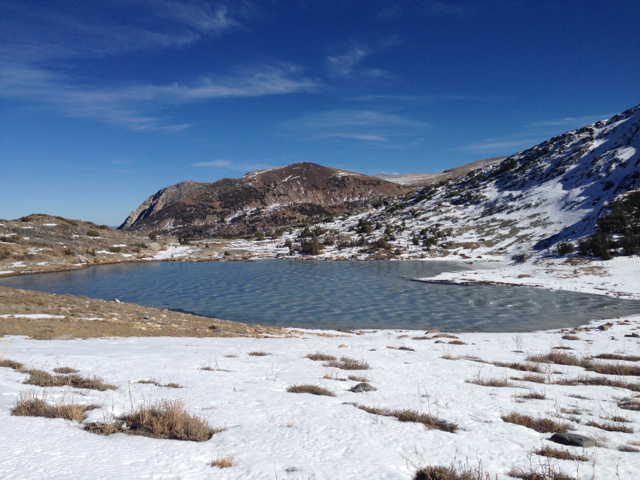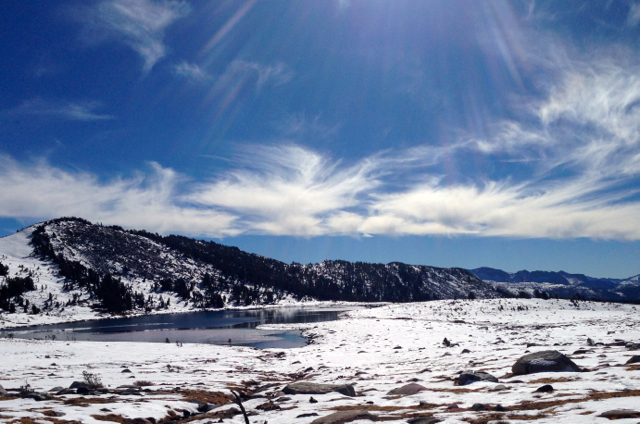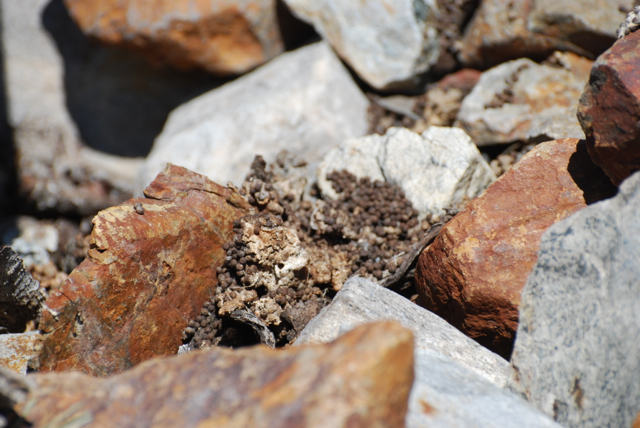 A pika snow angel (photo by Beth Pratt)
A pika snow angel (photo by Beth Pratt)
With the winter closure of Tioga Pass looming (or is it? no storms in the short term forecast), I've been dashing up to Gaylor Lakes as frequently as possible to spend time with my favorite pika family before they snuggle under the snow and nibble on their dried lupine stalks.
Although I observed several pika scrambling on the rocks, I was not fast enough on the camera draw to obtain any photographs, which is rare for me at this pika village near Gaylor Lakes. This population is extremely friendly and usually comes out and smiles for the camera. Last time I visited, however, I observed two red-tailed hawks and a prairie falcon scouting the territory, so perhaps they have discovered this pika paradise as well.
Yet I photographed something just as cool as a live pika- a pika snow angel! The pika leapt onto the snow and disappeared into the rocks before I could take the photo, but he left his body print. Animal tracks are another favorite part of winter hiking as I enjoy seeing the paths of wandering wildlife, their tracks invisible for most of the year.
One critter I encountered that left no tracks was a cool spider. Except it wasn't a spider. According to my friend Eddie Dunbar of BugPeople, the arachnid was a Harvestman or type of daddylonglegs as spiders possess two body parts. Spider or no spider, it was one badass bug wandering over snow at 11,000 feet.
 An arachnid at 11,000 feet (photo by Beth Pratt)
An arachnid at 11,000 feet (photo by Beth Pratt)
Here's 30 seconds of Yosemite Zen from my hike--you can hear the ice melting on Gaylor Lake.
 Gaylor Lake on a beautiful fall day (photo by Beth Pratt)
Gaylor Lake on a beautiful fall day (photo by Beth Pratt)
 Upper Gaylor Lake (photo by Beth Pratt)
Upper Gaylor Lake (photo by Beth Pratt) Animal track parade near Granite Lake (photo by Beth Pratt)
Animal track parade near Granite Lake (photo by Beth Pratt)
 Beautiful cirrus clouds over Gaylor Lake (photo by Beth Pratt)
Beautiful cirrus clouds over Gaylor Lake (photo by Beth Pratt)


















